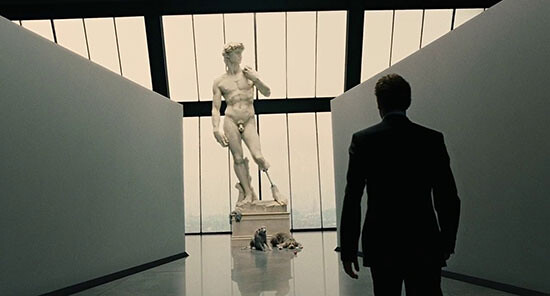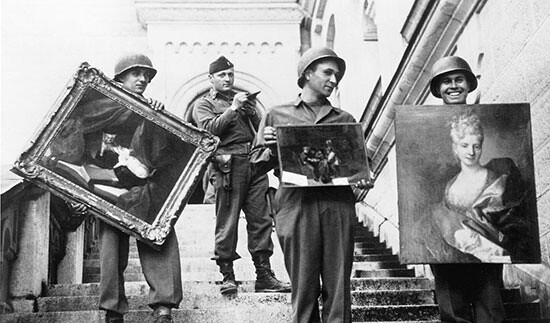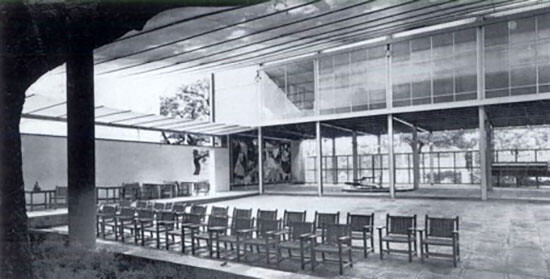I love history.
But history doesn’t love me back,
Whenever I call her I get her answering machine.
She says: “Insert logo here.”
A tank on a pedestal. Fumes are rising from the engine. A Soviet battle tank—called IS-3 for Joseph Stalin—is being repurposed by a group of pro-Russian separatists in Konstantinovka, Eastern Ukraine. It is driven off a WWII memorial pedestal and promptly goes to war. According to a local militia, it “attacked a checkpoint in Ulyanovka, Krasnoarmeysk district, resulting in three dead and three wounded on the Ukrainian side, and no losses on our side.”1
One might think that the active historical role of a tank would be over once it became part of a historical display. But this pedestal seems to have acted as temporary storage from which the tank could be redeployed directly into battle. Apparently, the way into the museum—or even into history itself—is not a one-way street. Is the museum a garage? An arsenal? Is a monument pedestal a military base?
But this opens up more general questions. How can one think of art institutions in an age that is defined by planetary civil war, growing inequality, and proprietary digital technology? The boundaries of the institution have become fuzzy. They extend from pumping the audience for tweets, to a future of “neurocurating” in which paintings will surveil their audience via facial recognition and eye tracking to check whether the paintings are popular enough or whether anyone is behaving suspiciously.
Is it possible, in this situation, to update the twentieth-century terminology of institutional critique? Or does one need to look for different models and prototypes? What is a model anyway, under such conditions? How does it link on- and off-screen realities, mathematics and aesthetics, future and past, reason and treason? And what is its role in a global chain of projection as production?
In the example of the kidnapped tank, history invades the hypercontemporary. It is not an account of events post factum. It acts, it feigns, it keeps on changing. History is a shape-shifting player, if not an irregular combatant. It keeps attacking from behind. It blocks off any future. Frankly, this kind of history sucks.
This history is not a noble endeavor, something to be studied in the name of humankind so as to avoid being repeated. On the contrary, this kind of history is partial, partisan, and privatized, a self-interested enterprise, a means to feel entitled, an objective obstacle to coexistence, and a temporal fog detaining people in the stranglehold of imaginary origins.2 The tradition of the oppressed turns into a phalanx of oppressive traditions.3


Does time itself run backwards nowadays? Did someone remove its forward gear and force it to drive around in circles? History seems to have morphed into a loop.
In such a situation, one might be tempted to rehash Marx’s idea of historical repetition as farce. Marx thought that historical repetition—let alone reenactments—produces ludicrous results. However, quoting Marx, or indeed any historical figure, would itself constitute repetition, if not farce.
So let’s turn to Tom Cruise and Emily Blunt instead, which is more helpful. In the blockbuster Edge of Tomorrow, the Earth has been invaded by a savage alien species known as Mimics. While trying to get rid of them, Blunt and Cruise get stuck in a time-looped battle; they get killed over and over again, only to be respawned at sunrise. They have to find a way out of the loop. Where does the Mimic-in-chief live? Underneath the Louvre’s pyramid! This is where Blunt and Cruise go to destroy him.


The enemy is inside the museum, or more accurately, underneath it. The Mimics have hijacked the place and turned time into a loop. But what does the form of the loop mean, and how is it linked to warfare? Giorgio Agamben has recently analyzed the Greek term stasis, which means both civil war and immutability: something potentially very dynamic, but also its absolute opposite.4 Today, multiple conflicts seem to be mired in stasis, in both senses of the term. Stasis describes a civil war that is unresolved and drags on. Conflict is not a means to force a resolution of a disputed situation, but a tool to sustain it. A stagnant crisis is the point. It needs to be indefinite because it is an abundant source of profit: instability is a bottomless gold mine.5
Stasis happens as a perpetual transition between the private and public spheres. It is a very useful mechanism for a one-way redistribution of assets. What was public is privatized by violence, while formerly private hatreds become the new public spirit.
The current version of stasis is set in an age of cutting-edge nonconventional warfare. Contemporary conflicts are fought by über-militias, bank-sponsored bot armies, and Kickstarter-funded toy drones. Their protagonists wear game gear and extreme sports gadgets, and they coordinate with Vice reporters via WhatsApp. The result is a patchwork form of conflict that uses pipelines and 3G as weapons within widespread proxy stalemates. The present permawar is fought by historical battle reenactors (in the Ukrainian example, on both sides of the conflict6), which one could well call real-life Mimics. Stasis is the curving back of time into itself, in the context of permanent war and privatization. The museum leaks the past into the present, and history becomes severely corrupted and limited.


Alfonso Cuarón’s brilliant film Children of Men presents another way that art institutions might respond to planetary civil war.7 It depicts a bleak near-future where humanity has become sterile. A planetary civil war has engulfed Britain, dividing the island into segregated zones, one for refugees and undocumented persons—a total dystopia—and another for citizens. Turbine Hall at the Tate Modern has become the home of the Ministry of the Arts; here, precious artworks are given a safe haven: an Arc of the Arts. In one scene set in Turbine Hall, Michelangelo’s David is shown with a broken leg, perhaps damaged during the conflict.
The destruction of antiquities by Daesh, which was preceded by major destruction and the looting of cultural objects during the US invasion in Iraq, raises the question: Wouldn’t it be great to have an Arc of the Arts that could rescue the antiquities of Palmyra or Nineveh and safeguard cultural treasures from violence?


However, the Arc of the Arts is a quite ambivalent institution. One is never quite sure what its function really is. In another scene, Picasso’s Guernica is used as a decoration for a private dinner.8 The Arc of the Arts might be an institution that has become so secure that the only people permitted to see the artworks are the Arc’s directors, their children, and their servants. But it could also be an evolution of international freeport art storage, where artworks disappear into the invisibility of tax-free storage cubes.9
Besides the international biennial, duty-free art storage is probably the most important contemporary active form for art. It’s like the dystopian backside of the biennial, at a time when liberal dreams of globalization and cosmopolitanism have been realized as a multipolar mess peopled with oligarchs, warlords, too-big-to-fail corporations, dictators, and lots of newly stateless people.10
In the late twentieth century, globalization was described as a formula: the value of civil society multiplied by the internet divided by migration, metropolitan urbanism, the power of NGOs, and other forms of transnational political organization.11 Saskia Sassen characterized those activities as “citizen practices that go beyond the nation.”12 The internet was still full of hope and people believed in it. This was long ago.


The organizational forms pioneered by human rights NGOs and liberal women’s rights campaigns are now deployed by oligarch-funded fascist battalions, GoPro jihadi units, displaced dudes playing FOREX exchanges, and internet trolls posing as feng shui Eurasians.13 In their wake, para-statelets and anti-“terrorist” operation zones emerge alongside duty-free zones, offshore entities, and corporate proxy concessions.14 At the same time, horizontal networks are turned into global fiber-optic surveillance: the planetary civil war is fought by engaging with the logistic disruptions of planetary computerization. Contemporary cosmopolitans do not fail to promptly engage in civil warfare whenever the chance presents itself. Every digital tool imaginable is put to work: bot armies, Western Union, Telegram,15 PowerPoint presentations, jihadi forum gamification16—whatever works. Stasis acts as a mechanism that converts the “cosmo-” of “cosmopolitan” into “corporate” and the polis into property.
The corresponding institutional model for art is freeport art storage, built on tax-exempt status and tactical extraterritoriality. Children of Men shows how this model could become a template for public institutions amidst the effects of planetary civil war, securing artworks to the point of withdrawal. While the international biennial was the active form of art for late twentieth-century ideas of globalization, duty-free art storage and the terror-proof hypersecure bunker are its equivalent in the age of globalizing stasis and pop-up NATO fence borders. But this is not a necessary or inevitable outcome.
Consider how Guernica was hung during a previous global civil war.
Guernica was made for the Spanish Republic’s pavilion at the 1937 World Expo in Paris, to show the results of airstrikes on civilian populations. In terms of conservation, this was a lousy decision indeed. The painting was hung more or less outdoors for quite some time.
In the future projected by Children of Men, Picasso’s painting finds shelter from the mayhem of war in a private dining room. The painting might be “safe,” and it certainly enjoys a climate-controlled atmosphere, but very few people will see it. In the historical civil war, however, a completely opposite decision was made: to expose the painting, to literally put it out there. After all, in French and other Latin languages, a show is called an “exposition.” Not an imposition.17


In terms of conservation, the scenario in Children of Men is contradictory, because the first thing that has to be conserved or even created is a situation where art can be seen and accessed. Why is this so? Because art is not art if it cannot be seen. And if it is not art, there is no point in conserving it. More than the artworks themselves, the thing that’s threatened by the institutional response to civil war—be it privatization or overprotection—is public access. But it is public access, to a certain degree, that makes art what it is in the first place, thus necessitating its conservation. Hence the contradiction: art requires visibility to be what it is, and yet this visibility is precisely what is threatened by efforts to preserve or privatize it.
But there is something wrong here. The Spanish Republic’s pavilion is, after all, an example from 1937. Am I not lapsing into bad old nostalgic Zombie Marxism here? Isn’t this repetition as farce?
The answer is no. Let’s come back to Edge of Tomorrow to see how it solves the problem of the loop. It offers an unexpected solution to the problem of stasis, to escaping from history-as-repetition. The movie is based on the novel All You Need Is Kill by Hiroshi Sakurazaka, which built a narrative out of the experience of hitting the reset button on a video game console. So it is no coincidence that the movie narrates the impasse of a gamer being stuck, unable to complete a given level. But gamers are used to this: it is their mission to get to the next level. A gamer is not a reenactor. She doesn’t derive pleasure from having to play the same level over and over again or endlessly reenacting historical models. She will go online and look up how to beat the level and move on. In gaming (most games at least), there is an exit for each level, each repeated sequence, each loop. Most likely there is a weapon or a tool hidden in some cupboard, and this can be used to vanquish whatever enemy and complete the level. Edge of Tomorrow not only maintains that there is a tomorrow, but that we are positioned at its edge, that it is possible to complete the level and break free from the loop. Gaming can evolve into playing. And here, the ambiguity of “play” is helpful. On the one hand, play is about rules, which must be mastered if one is to proceed. On the other, play is also about the improvised creation of new, common rules. So reenactment is scrapped in favor of gaming moving towards play, which may or may not be another form of acting.
What does all this mean for the museum? First of all, one could say that history only exists if there is a tomorrow—if tanks remain locked up within historical collections and time moves on. The future only happens if history doesn’t occupy and invade the present. The museum must render the tank useless upon entry, the way old cannons are filled with cement before being displayed in parks. Otherwise, the museum becomes an instrument for prolonging stasis by preserving the tyranny of a partial, partisan history, which also turns out to be a great business opportunity.


“Any player may declare a new rule at any point in the game” is one of the many rules of the game Calvinball, played by the titular characters in the cartoon Calvin and Hobbes .
But what does this have to do with the Spanish pavilion? It’s very simple. There was one detail I didn’t mention but which is very obvious if you think about it. In 1937, Guernica was new. It was a newly commissioned artwork dealing with the present. The curators didn’t pick Desastres de la Guerra by Goya or another historical work, even though it might have fit perfectly too. They commissioned new pieces and educational setups to speak about the present. To reactivate that model, one has to do the same. If one wants to reactivate this history, it needs to be different. On the next level. With new works. In the present. This is a huge endeavor of course, one that goes far beyond the task of the museum as it is usually understood. It enters into the project of re-creating not only the city, but society itself. And here, we again encounter the idea of play. To play is to re-actualize the rules as one goes along. Or to create rules that demand new actualization every time. There is a continuum between games and play. Both need rules. On one end of the spectrum there is a looped form. On the other, an open one.18
To summarize these ideas about museums, history, and the planetary civil war: history only exists if there is a tomorrow. And, conversely, a future only exists if the past is prevented from permanently leaking into the present and if Mimics of all sorts are defeated. Consequently, museums have less to do with the past than with the future: conservation is less about preserving the past than it is about creating the future of public space, the future of art, and the future as such.
Thank you to Oleksiy Radynski for this intriguing example. Video of the tank being driven off its pedestal can be found here →; more information about the tank can be found here → and here →. Since the video was recorded, the tank was reportedly recaptured by Ukrainian forces and taken to Kiev, although none of these accounts could be independently verified.
This is also addressed in Brian Kuan Wood’s recent text “Frankenethics,” in Final Vocabulary, ed. Mai Abu ElDahab (Berlin: Sternberg Press, 2015), 30–41.
Thank you to Stephen Squibb for mentioning the movie Demolition Man (1993), a science-fiction scenario in which weapons are banned. The main characters have to get them from a museum because it’s the only place they still can be found. (This is not the case in Ukraine.) The institutional effort to preserve peace by remembering violence becomes the raw material for the recommencement of civil war.
Giorgio Agamben, La guerre civile: Pour une théorie politique de la Stasis (Paris: Points Collection, 2015). I can only hint at the genealogy and multiple implications of this term, starting from Carl Schmitt’s idea of a “global civil war” (Weltbürgerkrieg), which itself might have originated with Ernst Jünger. In the 1980s, Ernst Nolte’s use of the term led to the so-called Historikerstreit, and triggered a sort of revisionist mutiny by right-wing German historians seeking to minimize German responsibility for WWII and German crimes of all sorts. However, many other thinkers, including Hannah Arendt in On Revolution (1963), have reformulated this notion. It has also been used by Negri/Hardt and Jean-Luc Nancy, among many others.
Even though, of course, civil wars mainly produce the pauperization of people unwilling or unable to militarize their forms of organization.
On the Russian side, Igor Strelkow is probably the most famous reenactor of historical battles. He is currently being sued by the families of the people killed on Malaysian Airlines Flight 17; forces he commanded are suspected of having shot down the plane. On the Ukrainian side, “a military reenactment group is fixing the Ukrainian Army’s decrepit Soviet equipment,” according to Alexander Nieuwenhuis of Vice News →.
Thank you to David Riff for mentioning this film to me.
Full disclosure: I certainly wouldn’t be writing so much about Guernica if I hadn’t had first-hand experience of its current setup at the Museo Nacional Centro de Arte Reina Sofía in Madrid, where I just had a show. As usual, I assume a fully non-objective position in relation to just about anything.
See Hito Steyerl, “Duty-Free Art,” e-flux journal 63 (March 2015) →.
This was initially Oleksiy Radynski’s idea.
“The context for this possible alteration is defined by two major, partly interconnected conditions. One is the change in the position and institutional features of national states since the 1980s resulting from various forms of globalization. These range from economic privatization and deregulation to the increased prominence of the international human rights regime. The second is the emergence of multiple actors, groups, and communities partly strengthened by these transformations in the state and increasingly unwilling automatically to identify with a nation as represented by the state.” Saskia Sassen, “The Repositioning of Citizenship: Emergent Subjects and Spaces for Politics,” Berkeley Journal of Sociology 46 (2002) →.
Saskia Sassen, “Towards Post-National and Denationalized Citizenship,” in Handbook of Citizenship Studies, eds. Engin F. Isin and Bryan S. Turner (London: Sage, 2003), 277–91 →.
For trolls, see Adrian Chen, “The Agency,” New York Times Magazine, June 2, 2015 →.
See Keller Easterling, Extrastatecraft: The Power of Infrastructure Space (London: Verso, 2014).
See Josh Meyer, “Are ISIS Geeks Using Phone Apps, Encryption to Spread Terror?” NBC News, November 16, 2015 →.
See Jarret Brachman and Alix Levine, “The World of Holy Warcraft,” Foreign Policy, April 13, 2011 →.
It is fascinating to see how security measures to protect Guernica have evolved over time. While on display at Casón del Buen Retiro in Madrid recently, the painting was inside a massive bulletproof glass case and was watched by guards with machine guns.
In a private conversation, Stephen Squibb mentioned to me that Agamben writes about people freeing themselves from sacred, looping, repetitive time by “forgetting” it in human time.
This paper was written at the invitation of Pip Laurenson for the conference Media in Transition at Tate Modern, London. It was a great event, thank you so much. I could never have written any of it without the amazing support of Oleksiy Radynski and the many discussions I had with him. Also vital for the development of the ideas in the text were Program-Ace, Kharkiv; Max Schmoetzer; David Riff; Anton Vidokle; and participants in the Landscape Class, Berlin. I would also like to thank João Fernandes and Manuel Borja-Villel of the Museo Nacional Centro de Arte Reina Sofía in Madrid, who gave me lots of in-depth explanation about museological strategies and decisions related to Guernica and the role of the model of the Spanish Republic’s pavilion at the Reina Sofía.

